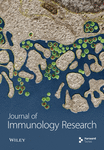Serial Analysis of Antimitochondrial Antibody in Patients with Primary Biliary Cirrhosis
Abstract
Antimitochondrial antibodies (AMAs) are the classic serologic marker in primary biliary cirrhosis (PBC). However, there have been only limited attempts to study changes in titer or isotype analysis of such AMAs in patients followed for long periods of time
We took advantage of stored sera from well-characterized patients with PBC followed for a period of 7-28 years (mean duration of 13.5 years). Immunoblot and enzyme-linked immunosorbant assays were performed against PDC-E2, BCOADC-E2 and OGDC-E2 as well as isotype analysis of antigen-specific IgG, IgA and IgM antibodies against each of these mitochondrial autoantigens. Sera were analyzed for total IgG, IgA and IgM by radial immunodiffusion. The sera titer of AMAs was significantly higher in younger patients with PBC. Indeed, age of onset of clinical PBC was a significant predictor for the highest values of sera AMAs. In contrast, the AMA titer did not significantly change over time in this prolonged longitudinal study. The total sera levels of the individual immunoglobulins did not show a time-dependent change, when based on age of onset of the disease. Higher titers of AMAs were noted in the younger patients. Furthermore, despite this long follow-up, there was no evidence for a significant change in AMA levels; also, levels were not influenced by drug therapy used during the period of observation.




